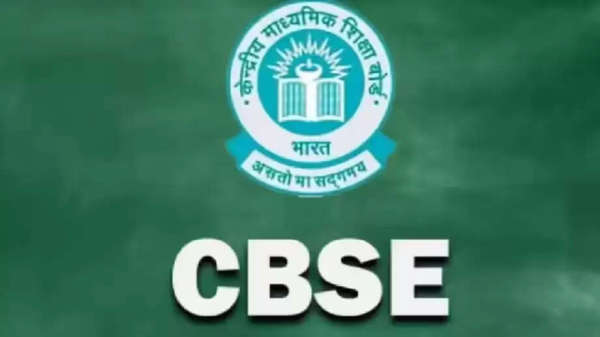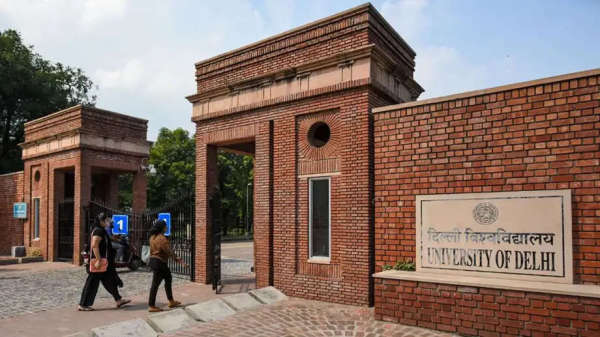With a vibrant startup ecosystem and a young demographic, India can ride the wave of technological transformation. Played right, AI, quantum computing (QC) and semiconductors could supercharge growth and global clout. If we hedge our bets correctly, these three powerhouses could unleash unprecedented growth and global influence.
The name of the game has changed.
To achieve Viksit Bharat by 2047, India must drive innovation in these three critical technologies and shift to a product-driven economy - or risk falling behind globally.
Within the Indian entrepreneurial ecosystem, there is an awareness that ideas will fuel the future. According to the 2024 Knowledge Paper by Fraunhofer Society, India saw a record number of patent applications (90,300) filed in 2023, with over one lakh patents granted. Yet, India faces challenges in commercialising this IP.
The paper also states that in the last decade (2014-24), IPR payments tripled from $4.8 bn to $14.3 bn, while IPR receipts only doubled from $0.7 bn to $1.5 bn. This means that India is paying approximately 10 times more for IP usage than it receives. This imbalance indicates a broader difficulty in translating domestically generated knowledge and innovation, including potentially data-driven innovations, into commercially viable products and services. In short - our patents are not becoming products.
India's investment in R&D has been lower than other countries, but change is underway.
These existing efforts, while valuable, are limited in scope.
To propel India to the forefront of R&D and harness the diaspora's potential, it needs to implement programmes that can attract top-tier scientific minds and bring back talent to invigorate India's innovation ecosystem. To do this, we need implement programmes across two tracks:
Track 1 should attract 250 distinguished academics from the top 100 global universities over five years, requiring them to spend at least six months annually at an Indian host institution for a minimum of five years. They should receive a one-time research budget of up to $1 mn to establish labs or initiate projects.
Track 2 should create 1,000 research sabbaticals for academics from the top 200 global universities, supported by a one-time $100,000 budget and additional annual 'top-ups'. Both tracks should provide competitive sustenance allowances and require collaborations with local academics and mentorship for PhD students.
India should embrace research in the arts by allocating 15% of its funding to the non-sciences and humanities. This could include fields like design, architecture, performing arts and digital media - specialised areas that not only enrich culture but also drive innovation, enhance problem-solving skills and contribute to sustainable urban development.
Other countries like China have succeeded at this task. Through initiatives like the Young Thousand Talents (YTT) programme, China successfully enticed 20,000 scientists of Chinese descent to return by offering substantial financial incentives and research support. In comparison, top talent continues to leave India for opportunities abroad in tech. Nearly all of India's AI researchers have opted for careers in countries like the US, Australia and Britain.
Indians are making an impact in high- ranking positions at leading tech companies in the West. Our challenge now is to bring back these top researchers, academics and technicians, along with the best talent from around the world, to contribute to India's story.
A dedicated national programme is key, one that incentivises the sustained engagement of 250 academics from the top 100 global universities with India's R&D ecosystem and offers 1,000 sabbaticals for scholars from the top 200 universities.
When you combine these efforts with our dynamic startup movement and the fund for deep-tech, India can position itself at the forefront of these emerging technologies, ensuring that the technological revolution benefits all.
The name of the game has changed.
- By 2030, AI is projected to contribute a staggering $15.7 tn to the global economy - that's over four times GDP of Britain in 2024.
- QC will bring a paradigm shift in problem-solving capabilities and is being plugged into processes ranging from optimising supply chains to advancing drug discovery.
- Advancements in semiconductor manufacturing are platforming digital transformations. By investing in local chip design and production, India can reduce its dependency on imports and become an integral part of the global supply chain.
To achieve Viksit Bharat by 2047, India must drive innovation in these three critical technologies and shift to a product-driven economy - or risk falling behind globally.
Within the Indian entrepreneurial ecosystem, there is an awareness that ideas will fuel the future. According to the 2024 Knowledge Paper by Fraunhofer Society, India saw a record number of patent applications (90,300) filed in 2023, with over one lakh patents granted. Yet, India faces challenges in commercialising this IP.
The paper also states that in the last decade (2014-24), IPR payments tripled from $4.8 bn to $14.3 bn, while IPR receipts only doubled from $0.7 bn to $1.5 bn. This means that India is paying approximately 10 times more for IP usage than it receives. This imbalance indicates a broader difficulty in translating domestically generated knowledge and innovation, including potentially data-driven innovations, into commercially viable products and services. In short - our patents are not becoming products.
India's investment in R&D has been lower than other countries, but change is underway.
- ₹1 lakh cr fund for R&D, ₹10,300 cr earmarked for IndiaAI Mission, and establishment of a Fund of Funds for Deep-Tech indicate a concerted effort to drive tech innovation.
- Visiting Advanced Joint Research (VAJRA) Faculty scheme invites overseas scientists to serve as adjunct faculty in Indian public institutions.
- Global Initiative of Academic Networks (GIAN) engages international experts for higher-ed short-term courses and lectures.
These existing efforts, while valuable, are limited in scope.
To propel India to the forefront of R&D and harness the diaspora's potential, it needs to implement programmes that can attract top-tier scientific minds and bring back talent to invigorate India's innovation ecosystem. To do this, we need implement programmes across two tracks:
Track 1 should attract 250 distinguished academics from the top 100 global universities over five years, requiring them to spend at least six months annually at an Indian host institution for a minimum of five years. They should receive a one-time research budget of up to $1 mn to establish labs or initiate projects.
Track 2 should create 1,000 research sabbaticals for academics from the top 200 global universities, supported by a one-time $100,000 budget and additional annual 'top-ups'. Both tracks should provide competitive sustenance allowances and require collaborations with local academics and mentorship for PhD students.
India should embrace research in the arts by allocating 15% of its funding to the non-sciences and humanities. This could include fields like design, architecture, performing arts and digital media - specialised areas that not only enrich culture but also drive innovation, enhance problem-solving skills and contribute to sustainable urban development.
Other countries like China have succeeded at this task. Through initiatives like the Young Thousand Talents (YTT) programme, China successfully enticed 20,000 scientists of Chinese descent to return by offering substantial financial incentives and research support. In comparison, top talent continues to leave India for opportunities abroad in tech. Nearly all of India's AI researchers have opted for careers in countries like the US, Australia and Britain.
Indians are making an impact in high- ranking positions at leading tech companies in the West. Our challenge now is to bring back these top researchers, academics and technicians, along with the best talent from around the world, to contribute to India's story.
A dedicated national programme is key, one that incentivises the sustained engagement of 250 academics from the top 100 global universities with India's R&D ecosystem and offers 1,000 sabbaticals for scholars from the top 200 universities.
When you combine these efforts with our dynamic startup movement and the fund for deep-tech, India can position itself at the forefront of these emerging technologies, ensuring that the technological revolution benefits all.
(Disclaimer: The opinions expressed in this column are that of the writer. The facts and opinions expressed here do not reflect the views of www.economictimes.com.)









Amitabh Kant
The writer is former CEO, NITI Aayog & G20 sherpa, GoI